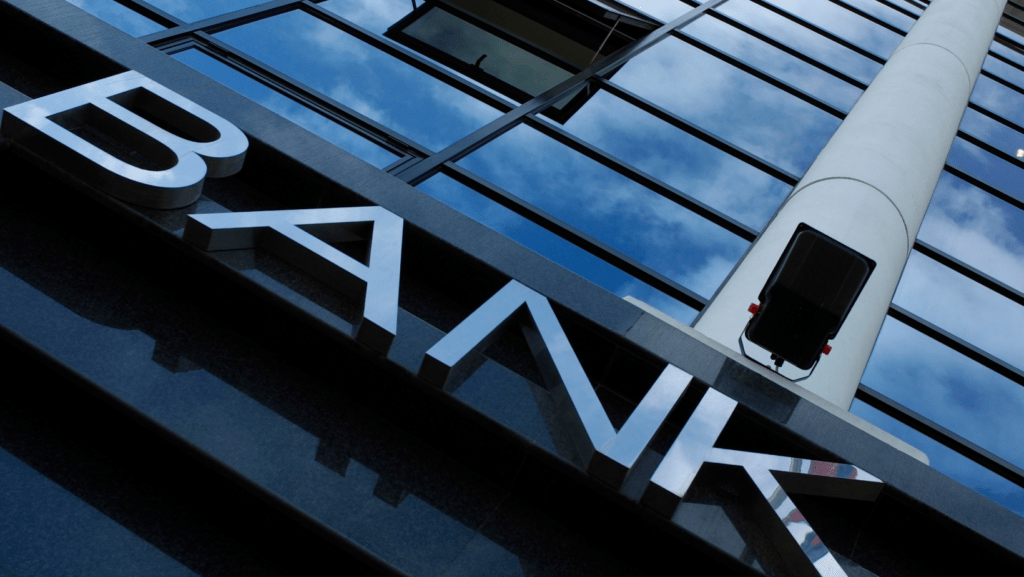
How Much Will You Really Get if Your Bank Locker Is Robbed? Shocking Truths About Insurance Cover
Did you know that bank lockers in India aren’t fully insured against theft? With a 15% spike in robberies, RBI’s new rules cap compensation at just 100x your locker rent—often lakhs below your valuables’ worth! Uncover shocking gaps in bank locker insurance cover, learn how to claim up to ₹9 lakh, and discover five game-changing tips to safeguard your jewelry and documents. Don’t risk losing everything.
Bank lockers have long been considered the safest place to store valuables, especially in India. But recent robberies and theft incidents have raised critical questions about the insurance cover on bank lockers and the compensation customers can expect in such events. This detailed guide explains the current insurance cover rules for bank lockers in India in 2025 and what amount a customer might receive if a robbery occurs.
Why Bank Locker Insurance Matters Now More Than Ever
Bank lockers are trusted across India for storing jewellery, important documents, and other valuables securely under bank supervision. Despite advanced security measures, the recent spike in bank locker thefts highlights the need for clear understanding of insurance coverage and compensation limits. Bank lockers symbolize security for millions of Indians storing gold, heirlooms, and critical documents. Yet, a 2025 surge in locker thefts—reportedly up 15% per RBI data—has highlighted gaps in insurance coverage. This post equips you with the latest rules, compensation insights, and strategies to secure your valuables beyond bank lockers.
What Is the Insurance Cover for Bank Lockers in India?
Bank’s Liability and Insurance Coverage: The Basic Framework
Unlike many other safety products, bank lockers themselves are not insured by the bank for the contents inside. The locker is considered a facility provided by the bank and is governed under RBI’s operational guidelines. However, banks are liable only in certain specific cases, such as:
- Theft, burglary, robbery, or dacoity where the bank is proven negligent or complicit
- Fire damage or building collapse
- Employee fraud or infidelity resulting in loss
In such cases, banks compensate up to 100 times the annual locker rent as per RBI guidelines updated in 2023-2025. For example, if your annual locker rent is ₹3,000, the maximum compensation you might receive is ₹3,00,000, irrespective of the actual value of lost valuables. This limit applies universally across public and private banks.
What the Bank Does NOT Cover
The bank does not cover losses caused due to:
- Natural calamities like floods, earthquakes, lightning
- Unexplained disappearance or loss without evidence of forced entry
- Customer's own negligence or fault
- Wear and tear, depreciation, or gradual damage to valuables
- Losses due to war, terrorism, radioactive contamination
This limitation shifts the risk burden largely onto the customer despite the stored items often being worth lakhs or crores in value.
Recent RBI Guidelines & Security Enhancements (2023-2025)
The Reserve Bank of India has introduced several new regulations to enhance safety, transparency, and customer protection for bank lockers:
- Mandatory biometric access systems (e.g., fingerprint or iris scans) in locker rooms
- 24x7 CCTV coverage recording access with footage stored for at least 180 days
- Alert systems to notify customers by SMS or email every time lockers are accessed
- New revised locker agreements to be signed by customers, clearly defining rights and liabilities
- Banks must provide customers with copies of the new agreements and renewal reminders
Despite these reforms, nearly 20% of locker holders had not signed the new agreements by mid-2025, possibly risking future access and protections.
How Much Will a Customer Receive if a Bank Robbery Happens?
Compensation Calculation: The 100x Rent Rule
The key factor determining compensation from banks is the annual locker rent charged by the bank. This rent varies according to locker size, branch location, and bank type. For example:
| Locker Size | Annual Rent (₹ approx.) | Maximum Compensation (₹ approx.) |
| Small (SBI urban) | ₹1,500 - ₹3,000 | ₹1,50,000 - ₹3,00,000 |
| Medium (SBI urban) | ₹4,000 - ₹6,000 | ₹4,00,000 - ₹6,00,000 |
| Large (SBI urban) | ₹7,000 - ₹9,000 | ₹7,00,000 - ₹9,00,000 |
Thus, even if jewelry worth several lakhs is stolen, banks legally compensate up to this capped amount only, provided the loss is attributed to bank negligence or fault. If the bank proves no fault (e.g., natural disaster), the customer may get zero compensation.
Documenting Evidence for Claims
To receive compensation, customers must:
- Provide proof of ownership such as bills, invoices, receipts, or property documents
- File a formal complaint with the bank immediately
- Submit affidavits and inventory details of lost items
- Cooperate in bank investigations into the theft or damage
The compensation is not automatic and depends on successful claim approval and verification by the bank.
Why Bank Lockers Alone Aren’t Enough
Recent incidents, like the 2025 Mumbai bank heist involving employee collusion, exposed locker vulnerabilities. RBI’s 2025 fraud report notes a 12% rise in banking-related thefts. The gap between actual losses and capped compensation leaves customers exposed. For example, ₹1 crore in jewellery may yield only ₹3 lakh in compensation.
Key Limitations
- Capped Compensation: Limited to 100x rent, not actual value.
- No Natural Disaster Coverage: Floods or earthquakes leave customers unprotected.
- Claim Delays: Investigations can take months, delaying relief.
- Lack of Awareness: Many don’t know about separate insurance options.
With these limitations, the conventional bank locker cannot guarantee full financial safety in all situations.
Pro Tips: How to Protect Your Valuables in Bank Lockers
1. Insure Contents Separately
Many insurers in India, such as IFFCO-Tokio, offer bank locker insurance policies that cover jewelry, documents, and valuables kept in lockers. These policies provide protection against theft, fire, floods, and other risks up to a self-declared sum insured, often exceeding bank compensation limits.
2. Maintain Documentation
Keep purchase bills, certificates, and proof of ownership outside the locker as well for faster claim processing.
3. Diversify Storage
Avoid keeping all valuables in a single locker. Spread them across locations or use alternative safe deposit services.
4. Follow Bank’s Safety Rules
Ensure your locker agreement is updated; enable SMS or email alerts for locker access; follow bank instructions strictly.
5. Consider Modern Alternatives
Digital vaults, home safes with alarms, and professional custodial services may complement bank locker storage for critical valuables.
Common Mistakes Customers Make With Bank Lockers
- Assuming the bank fully insures locker contents
- Not signing revised RBI-mandated locker agreements and risking access
- Not keeping sufficient ownership proofs for valuables
- Ignoring separate insurance policies for high-value items
- Over-relying on locker security without alerts or access monitoring
- Not regularly reviewing locker rent and compensation limits
Avoiding these mistakes can significantly reduce financial loss in worst-case scenarios.
Featured Snippet: Key Takeaways on Bank Locker Insurance
- No Content Insurance: Banks don’t insure locker contents; liability limited to negligence cases.
- Compensation Cap: Up to 100x annual rent (₹1.5–₹9 lakh for urban SBI lockers).
- Exclusions: No coverage for natural disasters or unexplained losses.
- RBI Rules: Biometric access, CCTV, alerts, and revised agreements mandatory.
- Customer Action: Buy separate insurance and maintain ownership proofs.
- Claim Process: Requires prompt complaints, documentation, and bank verification.
Additional Considerations for 2025
Insurance Policy Options
Private insurers offer tailored bank locker insurance with premiums starting at ₹1,500 annually for ₹10 lakh coverage. Policies cover risks like theft, fire, and natural disasters, unlike bank compensation. Compare providers like New India Assurance and HDFC Ergo for competitive plans.
Tax Implications
Locker rent isn’t tax-deductible, but insurance premiums for locker contents may qualify under Section 80C for jewelry insurance, per 2025 tax laws. Consult a tax advisor to maximize benefits.
Regional Variations
Locker rents and security measures vary. Metro branches (Mumbai, Delhi) charge higher rents (₹7,000–₹9,000 for large lockers) with advanced biometrics, while rural branches may lag, offering lower rents (₹1,000–₹2,000) but basic security.
Final Thought: Taking Control of Bank Locker Security and Insurance in 2025
While bank lockers remain a popular choice for safeguarding valuables, their insurance cover and compensation limits in India are often insufficient compared to the actual risks. Customers must understand that banks compensate only based on the annual locker rent and only for specific causes tied to bank negligence. The prudent approach is to combine locker usage with comprehensive insurance, proper documentation, and new RBI precautionary measures.
Take immediate action by reviewing your locker agreement, checking your annual rent and potential compensation limit, and exploring separate insurance policies tailored for your valuables. Stay alert to locker access notifications and keep your proof of ownership updated. In 2025, securing valuables in bank lockers calls for a smart, informed approach beyond just banking trust.
































